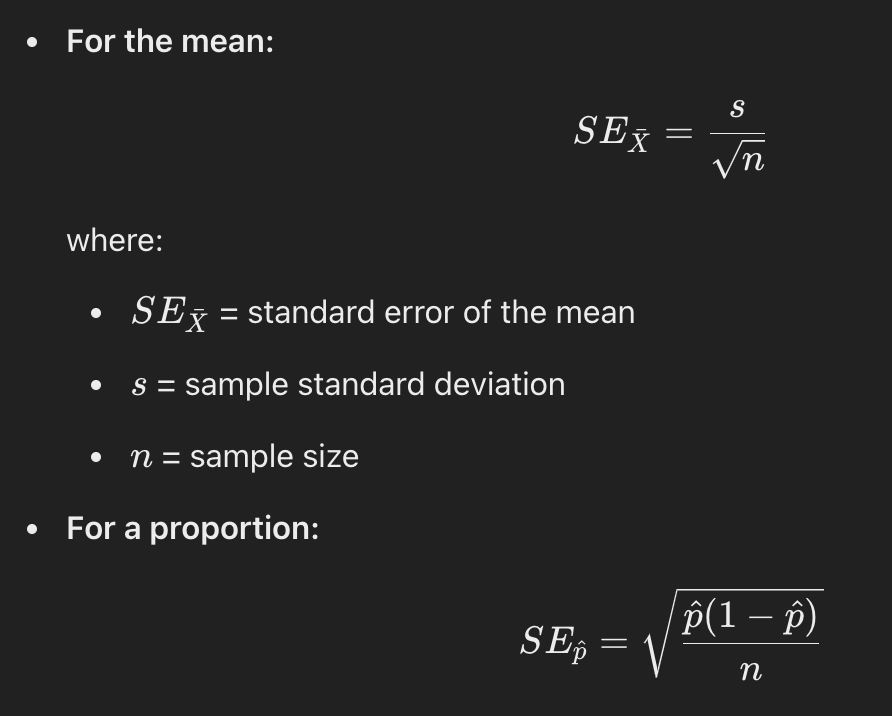Midterm 1 Coding
1/25
There's no tags or description
Looks like no tags are added yet.
Name | Mastery | Learn | Test | Matching | Spaced |
|---|
No study sessions yet.
26 Terms
Virtually resampling 1000 times with size 50
virtual_resampled_means <- pennies_sample %>%
rep_sample_n(size = 50, replace = TRUE, reps = 1000) %>%
group_by(replicate) %>%
summarize(mean_year = mean(year))
virtual_resampled_means
takes 1000 resamples, calculates the mean for each of them
virtual_resampled_means <- pennies_sample %>%
rep_sample_n(size = 50, replace = TRUE, reps = 1000) %>%
group_by(replicate) %>%
summarize(mean_year = mean(year))
virtual_resampled_means

Say you have a normal distribution with mean μ=6 and standard deviation σ=3.
(LCA.1) What proportion of the area under the normal curve is less than 3? Greater than 12? Between 0 and 12?
(LCA.2) What is the 2.5th percentile of the area under the normal curve? The 97.5th percentile? The 100th percentile?
use z score to get distance, then convert the score to a percentile
pnorm(zscore) → percentile
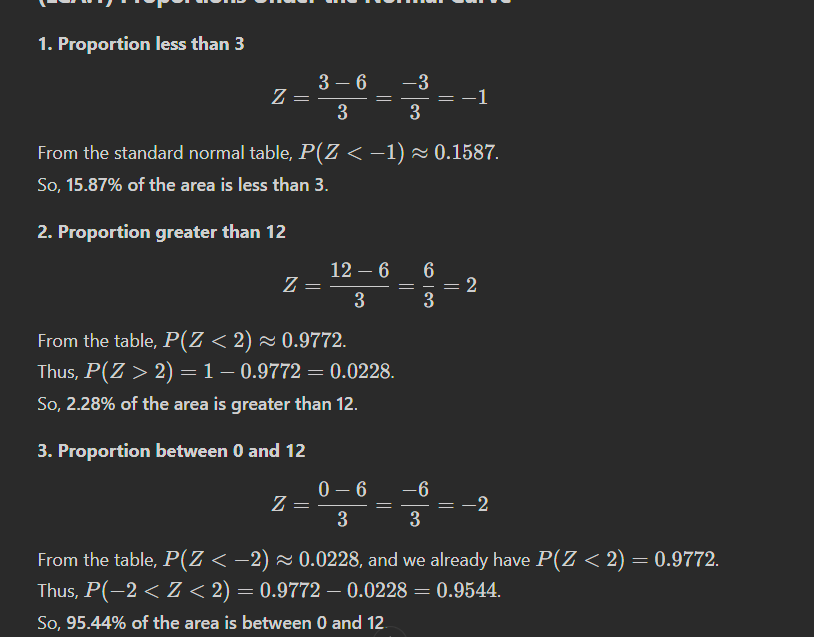
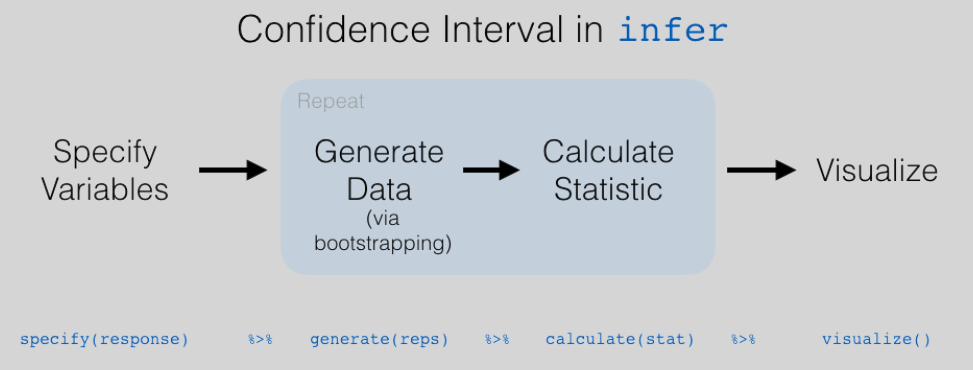
infer package
functionally equivalent to rep_sample_n
specify: the variable you are interested in
generate: generate the samples (equivalent to rep_sample_n)
calculate: calculate the statistic you are interested in (equivalent to group by and summarize)
get_confidence_interval (equivalent to summarize and quantile)

Visualizing infer results

Percentile method
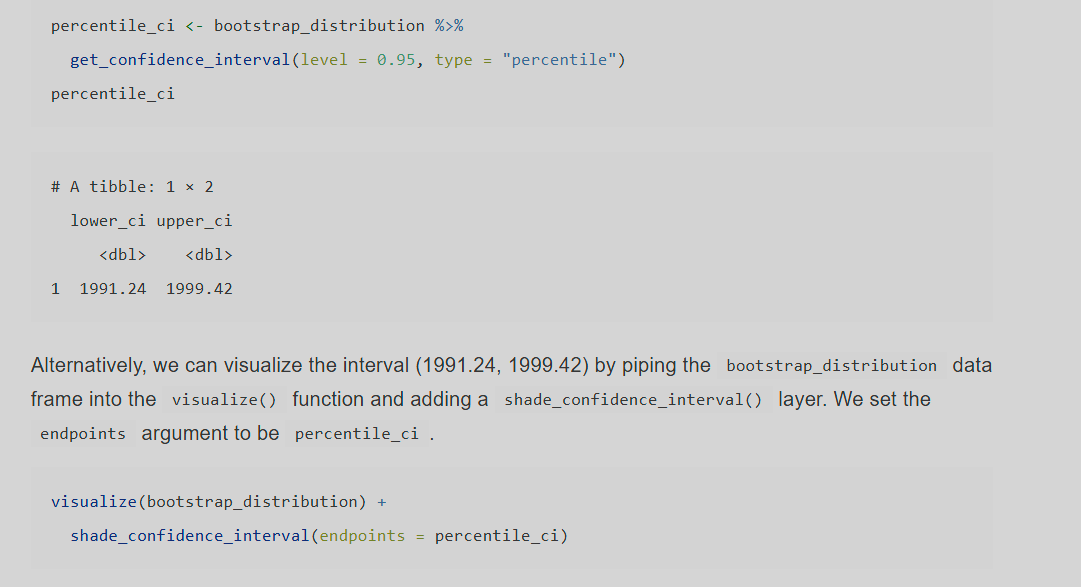
Testing success of a confidence interval
sample_1_bootstrap <- bowl_sample_1 %>%
specify(response = color, success = "red") %>%
generate(reps = 1000, type = "bootstrap") %>%
calculate(stat = "prop")
sample_1_bootstrap
Visualization
percentile_ci_1 <- sample_1_bootstrap %>%
get_confidence_interval(level = 0.95, type = "percentile")
percentile_ci_1
sample_1_bootstrap %>%
visualize(bins = 15) +
shade_confidence_interval(endpoints = percentile_ci_1) +
geom_vline(xintercept = 0.42, linetype = "dashed")
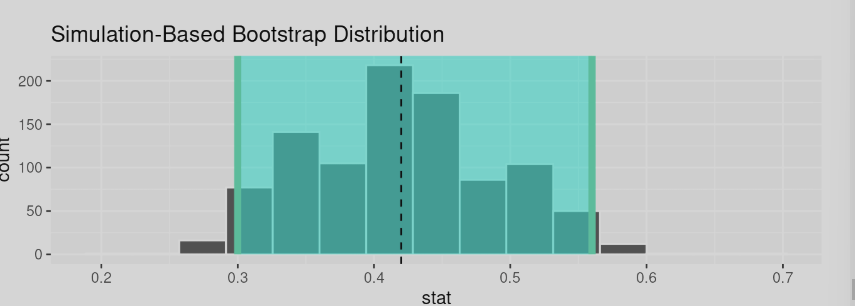
Pnorm and Qnorm
Pnorm - Probability
this is the area below the curve
u =10, std = 3 and want area below 11.5
pnrom( 11.5, mean = 10, sd = sqrt(3))
automatically takes the area to the left of the specified pthis is the oint
Qnorm - Quantile
Gives the crticial fvalue
From the area we know, need the value on the axis
qnorm(0.69, mean = 10, sd = sqrt(3))
Value of curve? → dnorm(x,std
CLT equations
Sample values are independent
Generally, if your sample size is greater than 10% of the population size, there will be a violation of independence.
if you go beyond 10% of population size you wil lbe in trouble since sampling with replacement violates independence
Sample size must be large enough.
For means:
no universal guideline for how big 𝑛n should be
but, usually sample >30 are big enough to get a reasonable approximation (not guaranteed!)
no way for you to check and also larger sample size the better
For proportions:
check 𝑛×𝑝≥10n×p≥10 and 𝑛×(1−𝑝)≥10
if these conditions hold you are good for propotion
Standard error equations
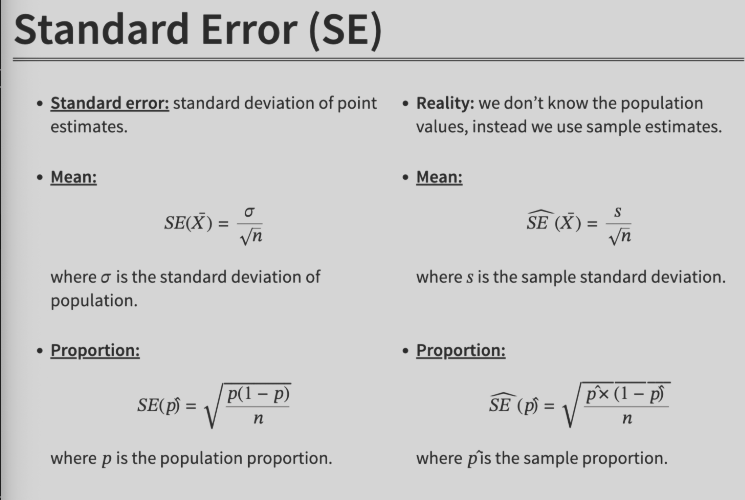

How to optain a CI for proportion
it is mean of the proportion- qnorm of the CI+1/2 of the uncovered area *sqrt(p(1-p)/n


Estimating the mean using CLT

Calculating CI for the mean


Z score

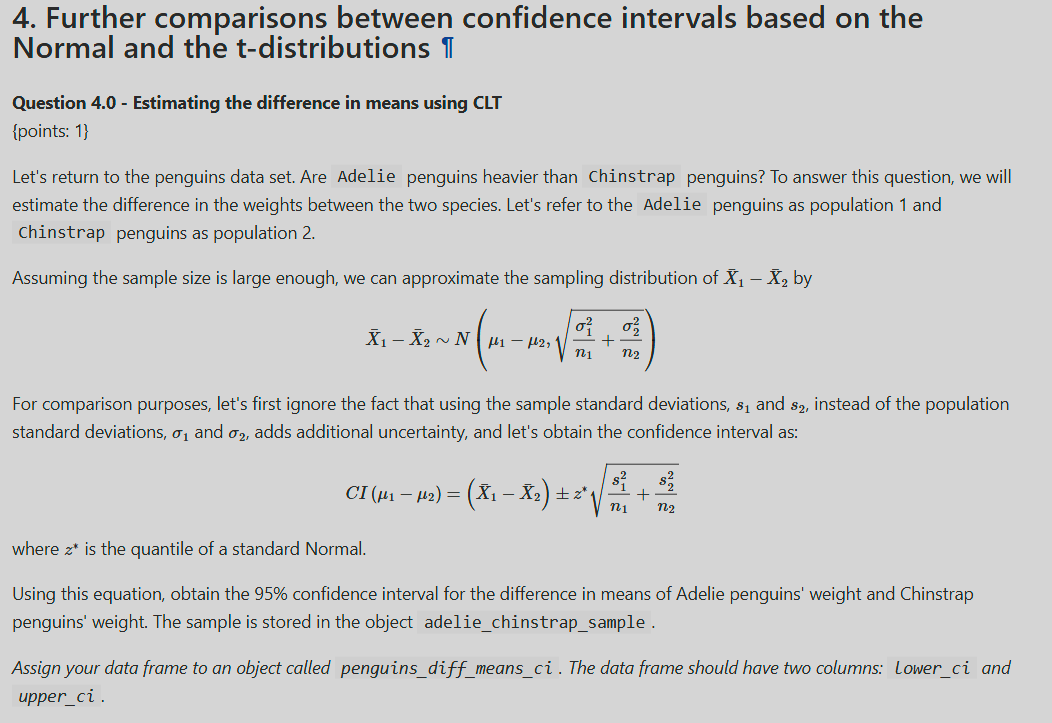

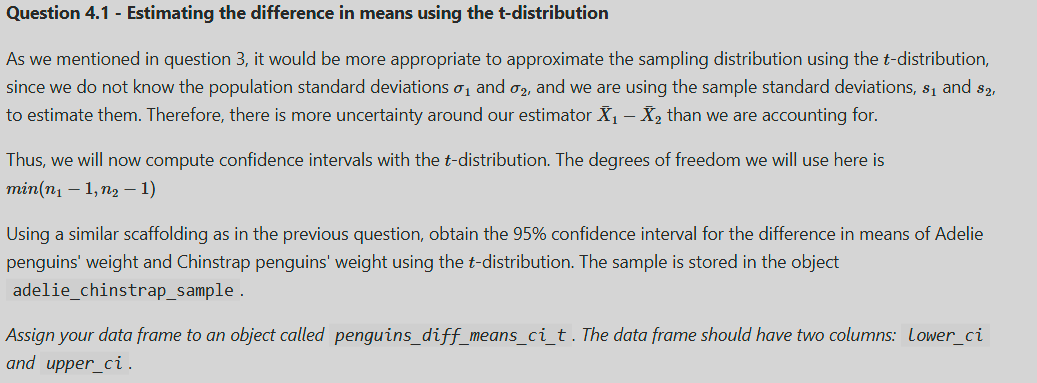

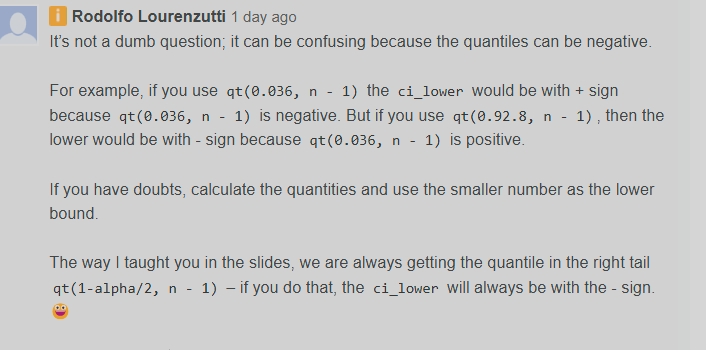
qt vs qnorm
The reason qt() is needed for small-sample means is not just because there are "more variables" but because the sample standard deviation itself is a random variable
Standard deviation equation for a population and for a sample
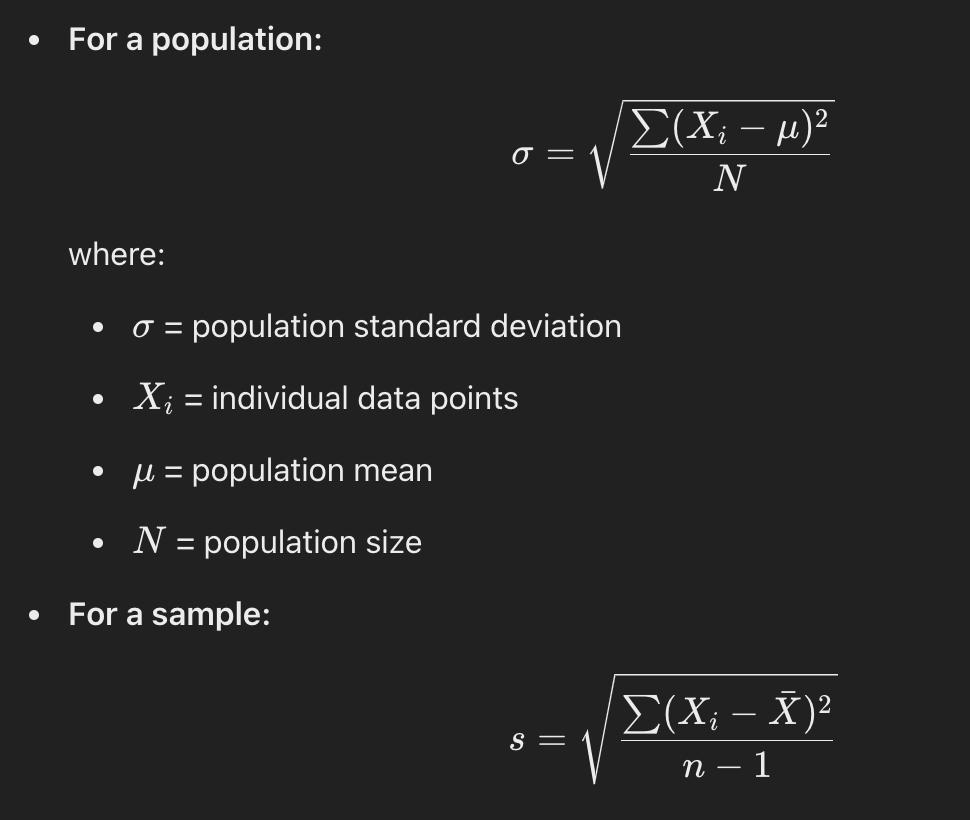
Standard error for a sample mean and proportion
